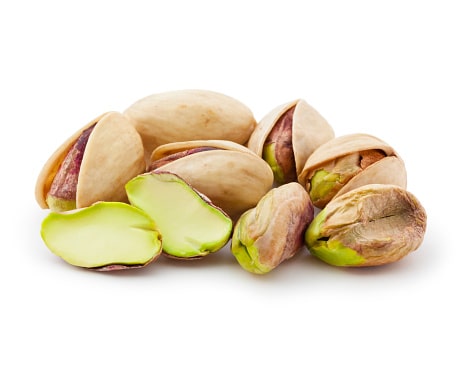
In the past three decades, the country's pistachio industry has gone through countless changes. Undoubtedlythe first serious development was the rapid expansion of the cultivated area, especially in the 60s and 70s, which continued in the 80s, but its speed never reached the previous two decades, and of course it was mostly concentrated outside Kerman province.
Familiarity with new methods of product management in pistachio
With the establishment of new orchards, a serious need for the development of processing units became apparent, and this need created a wave of development and construction of small and large processing units in the pistachio-growing provinces of the country, especially Kerman province. This development showed itself especially in the 70s, and its result was the creation of a group of non-service processing units that only processed the produce of the gardens owned by the same unit. Of course, the development of service units, which were ready to process the produce of the gardeners who tried to process their product personally and by accepting all the hardships, was put on the agenda at the same time. During this period, both the processors and gardeners were faced with the management challenge of how to process and separate the applicants' products in the shortest possible time without worrying about mixing the products of different gardens and individual interests of the gardeners. However, practically managing these considerations would seriously reduce processing speed and capacity.
It seems that today, with technical development and of course the development of cultural, work and management relations in processing units, the country's pistachio processing industry has found effective ways to get rid of this concern.. The ways that can shape the next evolution in the pistachio industry. This transformation is nothing but the management of product processing with the aim of the fastest working speed and the lowest possible cost. The current methods of product processing management in processing units and the existing experiences in this field are promising that by developing some of these experiences, we can hope for the qualitative evolution of the product in the future.
More processing with dry powder
In this method, all stages of pistachio processing, including peeling, drying, dry processing and winnowing of the product, bagging and loading of dry pistachios are completely done in the processing units, and opened mouth pistachios and closed mouths are delivered to the gardener separately. After weighing and loading, the blown pistachios, including under-sieved, deformed, ugly, pitted pistachios, are sold by the workshop and the payment is given to the creditor of gardeners account. It should be noted that in this method, each gardener has his own code, which is used to identify and process his pistachios from the beginning of the arrival of fresh pistachios until the final delivery of dry pistachios. The different steps in the more processing method are as follows :
After unloading on the ramp, the pistachio nuts enter the peeling pistachio wheels and then flow into the scum separator. In this machine, the pistachios are peeled and washed again and enter a metal basin filled with clean water ( water basin) While heavy pistachios go underwater, light pistachios (blank pistachios) remain on the surface of the water. After this stage, the pistachios enter two separate paths..
The pistachios in the bottom of the water are entered into the dehydrator by means of a lift installed under the water basin, so that some of their moisture is removed while making them more tender. The pistachios then enter the Gugir machine. This device includes a metal cylinder that rotates at a high speed so that the shelled pistachios, which are called guts, are directed to one side due to friction after hitting the cylinder, and the completely peeled pistachios to the other side. In this way, skinless pistachios and pits are separated with high precision. Unshelled pistachios are returned to the ramp to be shelled again with fresh pistachios. In the last stage of further processing, peeled pistachios are sent to dryers for final drying. These dryers are divided into separate parts to have the ability to dry the pistachio product of different gardeners separately.

On the other hand, water-flowing pistachios are directed into another desiccant device and after re-peeling, they enter the desiccant device for dry pistachios. At the end of the dehumidifier, the puckering process is done by air and then the pulping process is done like pistachios in the bottom of the water. At the end of the line, the blank pistachios are transferred to the field to dry under the sun. After the blank pistachios are dried, they are poured into the dry pond machine for pitting. At the end of this stage and after bagging, the blank pistachios are ready for sale by the processing workshop..
In the first stage of dry processing, the pistachios of each gardener were poured into a sieve until small and very large pistachios were taken by the sieve. The rest of the pistachios are directed into the needle wheels of the separating machine to separate from the mouth of the clamp. After this stage, the opened mouth pistachios are poured onto the inspection tape so that the workers can collect the so-called blown pistachios, which include free skin and kernels, deformed and discolored pistachios - each category separately. . At the end of the inspection line, the cleaned opened mouth pistachios are poured into a metal tray, and the worker who is responsible for their final control inspects the pistachios and then puts them into a sack. Cleaned opened mouth pistachios are packed in 50 to 70 kg sacks and the gardener's code and type of pistachio are written on each sack. The closed pistachios are also poured separately in another part to be transported to the warehouse and delivered to the gardener after packing in sacks and entering the gardener's code and the type of pistachio on each sack.
Wet processing without dry winnowing
In this method, further processing is done exactly the same as the method described in the previous section. After drying , heavy pistachios are put into sacks and delivered to the gardener in the form of a mixture of opened mouth and closed mouth . .
Unquality pistachios, including blank ones , after weighing and grading, have been sold at once by the processing workshop, the amount of which, after deducting the processing cost, will be sent to the creditor of farmer's account.
The cost of processing services without dry irrigation is about 20% lower than the cost of processing with dry irrigation due to the elimination of dry processing steps.
Collaborative processing
In this type of processing, each shipment of fresh pistachios entering the workshop is weighed and sampled before being mixed with pistachios from other growers. Pistachio sampling is done after peeling and in three time intervals of 5 minutes. The sample pistachios are poured into a container, after coding and entering information such as type of pistachio, date and invoice number of the scale and the name of the gardener, they are transferred to the sampling room. For each of the samples, the hollow percentage, the opened mouth percentage and the size of pistachios are determined.
All the pistachio shipments of gardeners participating in the joint processing contract are ready for sale after going through all the steps described in the description of the dry processing method, but they are arranged together and under a single number in the warehouse..
The pistachios that have been processed in a cooperative manner are sold at the right time by the joint decision of the representative of the processing unit and a representative on behalf of the gardeners participating in the cooperative processing contract, the amount of which is after deducting the processing fee and sales commission based on the specifications of the prototype shipment. The receipts from each gardener are divided among the gardeners according to the pre-agreed standards in the contract. If the gardener requests, based on the results of sampling, instead of cash, the share of the gardener's pistachios from the total amount of opened mouth and heavy ones that are communal pistachios will be delivered to the gardener. If this pistachio is different from the initial ounce of pistachio received from the gardener, the amount of delivered pistachio will be added or deducted according to the difference in market day price.
The processing of pistachios in a communal way has three major advantages
- Since the volume of pistachio cargo that is processed in a shared manner is much larger than the volume of individual shipments of each gardener, the cost of processing in this way is much lower (up to 35% cost reduction) than the cost of processing with a dedicated dry mill.
- The high tonnage of shared pistachio shipments makes the sales rate of these shipments in similar conditions much more favorable for the gardener than when pistachios are seized exclusively; and finally
- It is possible for buyers and merchants to obtain a high-quality large commercial shipments in the shared processing method.






User comments